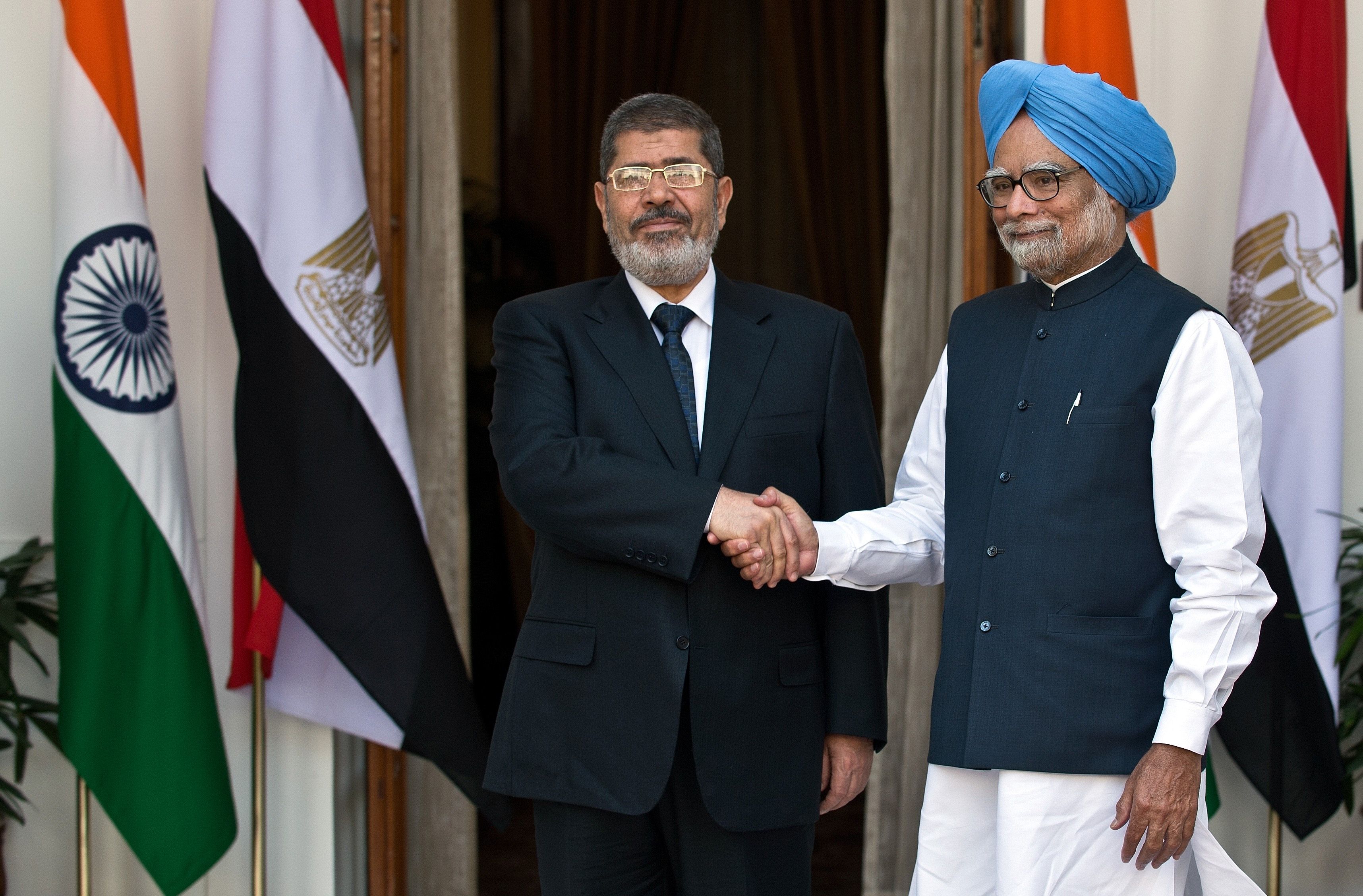TARHUNAH: The man squats down and fires. A rocket-propelled grenade shoots into the desert to calls of "Allahu Akbar", God is Greatest. Another man takes his place.
These are members of the volunteer army being trained by Libyan leader Muammar Qaddafi in the name of fighting any NATO ground invasion.
Libyan officials have said in recent weeks that they had begun arming and training civilians across government-controlled western Libya, in an effort to put the country’s tribes at the forefront of the fight against NATO attacks.
In a government-organized trip on Wednesday, journalists were taken to Tarhunah, 85 km (53 miles) southeast of Tripoli, to meet the volunteers who are being armed and trained there.
In the garden of an abandoned medical center, a rag tag group of about 80 men, from youths to old tribal leaders, sat in circles on the grass, watching listlessly as soldiers demonstrated how machine guns and grenade launchers work.
"We have trained 400 people so far and given them arms. We started with the NATO strikes," said Jamal Ibrahim Abu Ghrara, an agricultural engineer and head of the local people’s committee who was supervising the training.
Another 14 committees have also trained volunteers to fight what they see as a possible NATO invasion.
But the United Nations Security Council resolution under which NATO is carrying out air strikes in Libya does not provide for troops on the ground.
And while Britain and France have sent military advisors to the rebels, NATO members show no inclination to send large numbers of soldiers.
All around the training site, among orange earth and shrubs, squat the remains of hangars bombed by NATO in recent weeks.
Some seem empty, their roofs crumpled and only the metal frames standing. In others, the remains of burnt out military vehicles and what appeared from a distance to be anti-aircraft guns are visible.
Firing in the air
NATO air strikes have driven back Qaddafi’s troops and forced them to withdraw to the outskirts of Misrata, the focus of efforts to break an uprising against his 41-year rule that has put most of eastern Libya in rebel hands since mid-February.
In the tribal area of Tarhunah, which borders on the province of Misrata, volunteers fired in the air and said they supported the leader. Yet, there was no indication that they would be going to back the army in fighting for the port city.
Sitting on the grass, cradling his Kalashnikov rifle, 22-year-old Mohammed Jumaa, said he volunteered with his two brothers and two sisters, to protect their family in any war.
"We are all volunteers. Even the girls," Jumaa said softly.
"We’re not expecting a rebellion here or the rebels to reach here. It is about NATO. They are planning to come by land and they want to come here and take our oil."
Government minders hovered nearby as the volunteers were asked whether they had been given any choice in taking up arms. They all emphasized it was their decision to come forward.
Even before the air strikes began, Libyan teenagers received compulsory military training at school, mostly on light weapons.
On Wednesday, journalists were taken to two schools where pupils stood in line chanting "the people want Colonel Moammar".
The head of Al Saqiah wal Wadi School, which educates children aged between 6 and 12, said pupils were spending a day a week on non-combat military training. That would rise to two or three days a week during the holidays.
"We give them exercises and training without guns in grades 7 to 9," Abdelrazzak Mabrouk Al-Mahmoudi told reporters.
In the school yard, a boy of no more than 5 years old was taking apart and putting together a Kalashnikov, but Al-Mahmoudi said this was not school training: "That’s his father’s gun."
Leaving the schools, journalists drove back past the area where the men were being trained earlier but the garden was empty. At another location, over a stretch of rocky desert, a busload of men had taken their places for target practice.
Lying on their bellies, they fired machine guns at barrels across the desert before taking up the rocket-propelled grenade launchers. In a parting shot, a trainer perched atop a truck mounted with an anti-aircraft gun fired into the air, spinning the battery and showering fleeing bystanders with the shells. As journalists left, the volunteers packed up their practice and headed for their own bus, the training apparently over.
